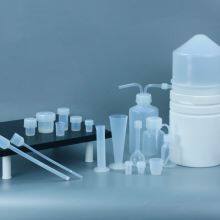New product rotary evaporator - vacuum continuous distillation thin film evaporation
Negotiable /Set
Min.Order:1 Set
Quick Details View All >
Nanjing Binzhenghong International Trade Co., LTD
PFA translucent flask for rotary evaporator single neck distillation flask HF acid resistance
Pear Shaped Glass Separatory Funnel PTFE/glass Piston Complete Specifications Accurate Scale
1/4 inch tubing connected PFA gas washing bottle perfluoroalkoxy alkanes absorbent bottle
ICP-MS Analysis PFA Washing Bottle Semiconductor Analitical Utensils
Large Capacity Reagent Bottle 2000ml PFA Liquid Storage Bottle FEP Sample Bottle
Product Details
/products/pfa-rotary-evaporator
Rotary evaporator, also known as rotary evaporation equipment, is a commonly used equipment in the laboratory. It is composed of a distillation flask, a heating pot, a condenser, and a receiving bottle. It is mainly used for continuous distillation of volatile solvents under reduced pressure conditions. It is used in chemistry, Chemical industry, biomedicine and other fields. It is suitable for reflux operation, rapid evaporation of a large amount of solvents, concentration of trace components and reaction processes that require stirring, etc.
Most rotary evaporators on the market are equipped with rotary bottles, distillation bottles, condensers, etc., which are made of glass, which can meet the needs of routine experiments. If the experiment needs to use hydrofluoric acid, the distillation and condensation of fluoride, the glass material cannot meet the requirements.
The supporting consumables of our rotary evaporator are all made of Teflon material, resistant to hydrofluoric acid, hydrogen fluoride, etc., resistant to strong acid and strong alkali, and low dissolution and precipitation.
Characteristic
1. Resistant to strong acid, strong alkali, aqua regia, magic acid, hydrofluoric acid and various organic solvents;
2. Low precipitation: very low dissolution and precipitation of metal ions;
3. High and low temperature resistance: operating temperature -200~+260℃;
4. Anti-pollution: low blank value of metal elements;
5. Distillation and rotary evaporation for high-purity substances.
Contact Supplier

You May Like





New Products
Popular Searches
Recommended Products
Find Similar Products By Category